This takes its name from its previous use as a bank. The building stands on the site of the centuries-old St Lawrence’s Church which was sold in 1923 and demolished soon after.
Framed prints and text about the Pilgrim Fathers.
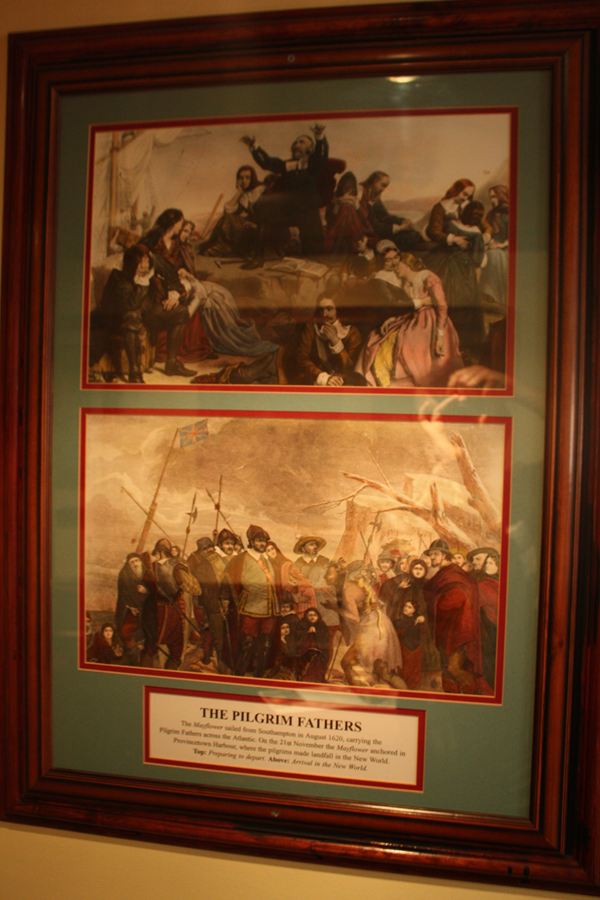
The text reads: The Mayflower sailed from Southampton in august 1620, carrying the Pilgrim Fathers across the Atlantic. On the 21st November the Mayflower anchored in Provincetown Harbour, where the pilgrims made landfall in the New World.
Top: Preparing to depart
Above: Arrival in the New World.
Framed drawings and text about St Laurence’s Church.
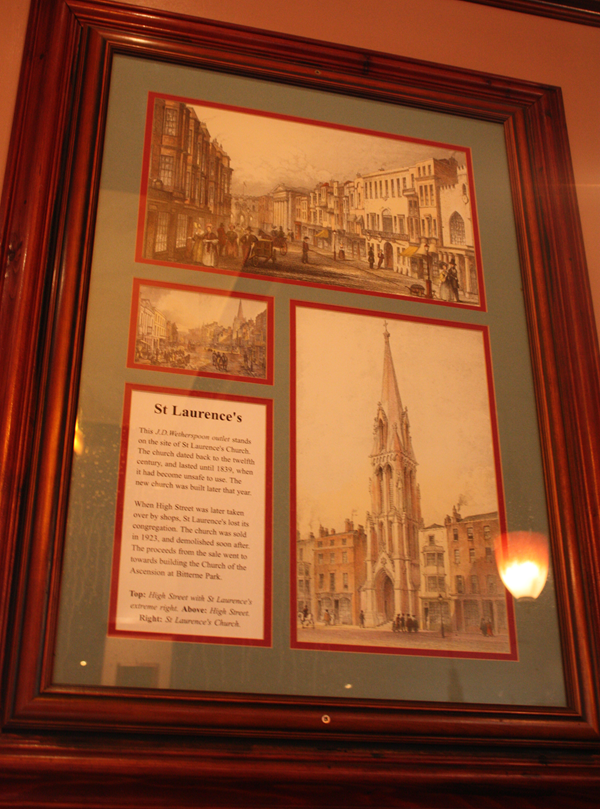
The text reads: The J.D.Wetherspoon outlet stands on the site of St Laurence’s Church. The church dated back to the twelfth century, and lasted until 1839, when it had become unsafe to use. The new church was built later that year.
When High Street was later taken over by shops, St Laurence’s lost its congregation. The church was sold in 1923, and demolished soon after. The proceeds from the sale went towards building the Church of the Ascension at Bitterne Park.
Top: High Street with St Laurence’s extreme right. Above: High Street.
Right: St Laurence’s Church.
A framed drawing and text about Jane Austen.
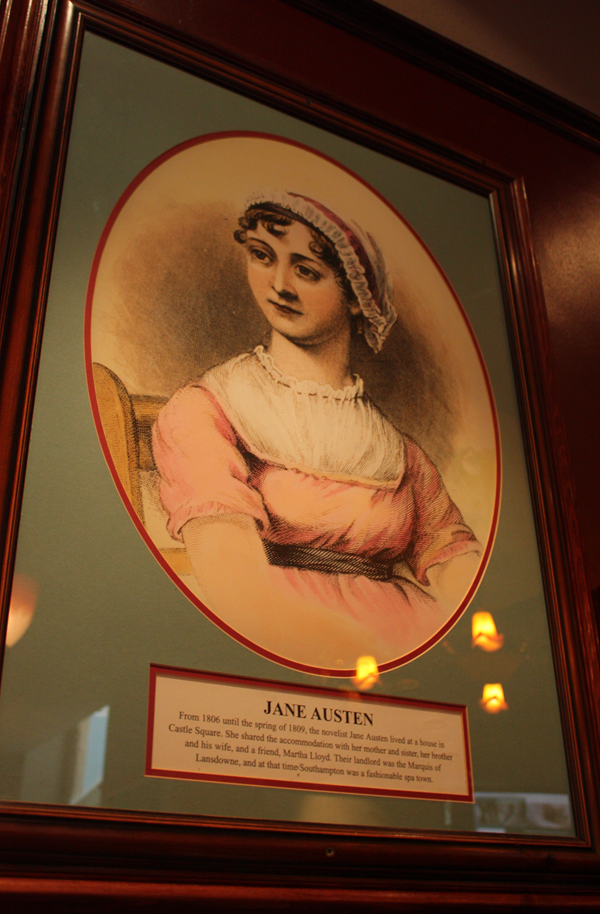
The text reads: From 1806 until the spring of 1809, the novelist Jane Austen lived at a house in Castle Square. She shared the accommodation with her mother and sister, her brother and his wife, and a friend, Martha Lloyd. Their landlord was the Marquis of Lansdowne, and at that time Southampton was a fashionable spa town.
A framed drawing and text about the Chevalier D’eon.
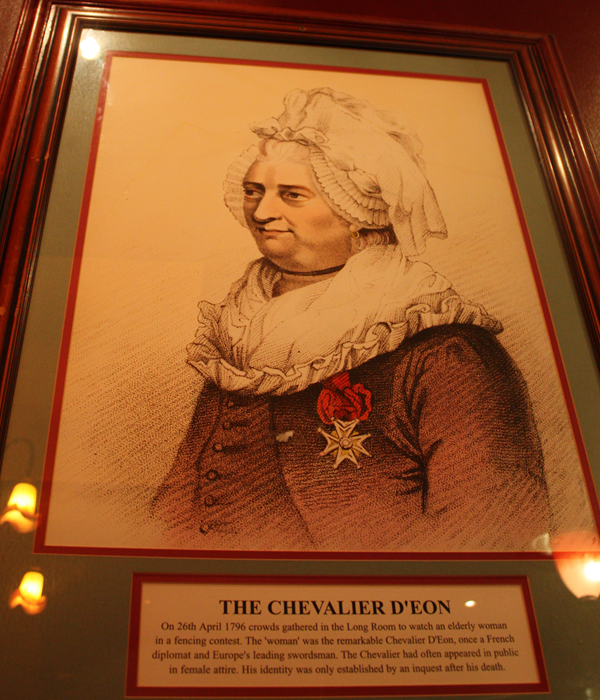
The text reads: on 26th April 1796 crowds gathered in the Long Room to watch and elderly woman in a fencing contest. The ‘woman’ was the remarkable Chevalier D’eon, once a French diplomat and Europe’s leading swordsman. The Chevalier had often appeared in public in female attire. His identity was only established by an inquest after his death.
Framed drawings and text about The Mignonette.
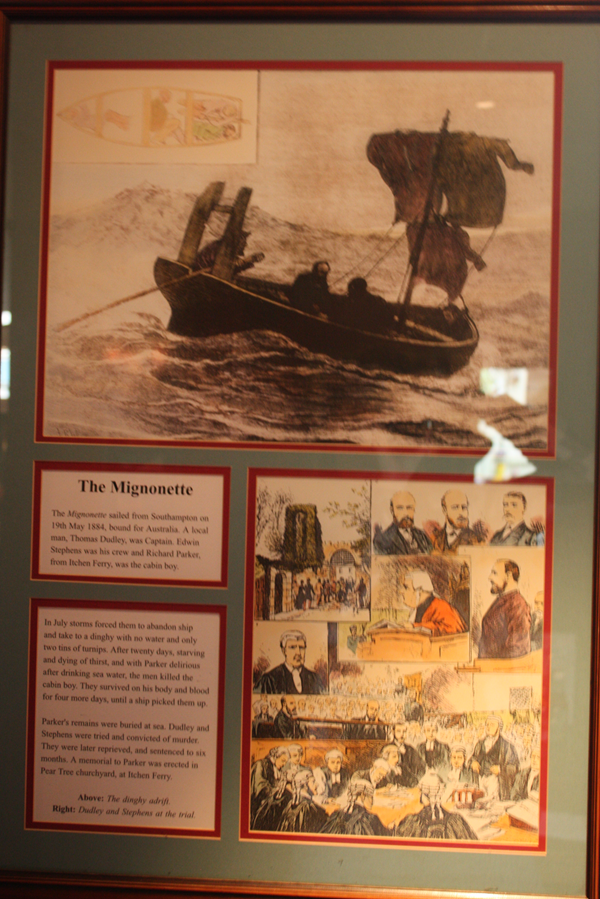
The text reads: The Mignonette sailed from Southampton on 19th May 1884, bound for Australia. A local man, Thomas Dudley, was captain. Edwin Stephens was his crew and Richard Parker, from Itchen Ferry, was the cabin boy.
In July storms forced them to abandon ship and take to a dinghy with no water and only two tins of turnips. After twenty days, starving and dying of thirst, and with Parker delirious after drinking sea water, the men milled the cabin boy. They survived on his body and blood for four more days, until a ship picked them up.
Parker’s remains were buried at sea. Dudley and Stephens were tried and convicted of murder. They were later reprieved, and sentenced to six months. A memorial to Parker was erected in Pear Tree churchyard, at Itchen Ferry.
Above: The dinghy adrift.
Right: Dudley and Stephens at the trial.
A framed print and text about Southampton Football Club.
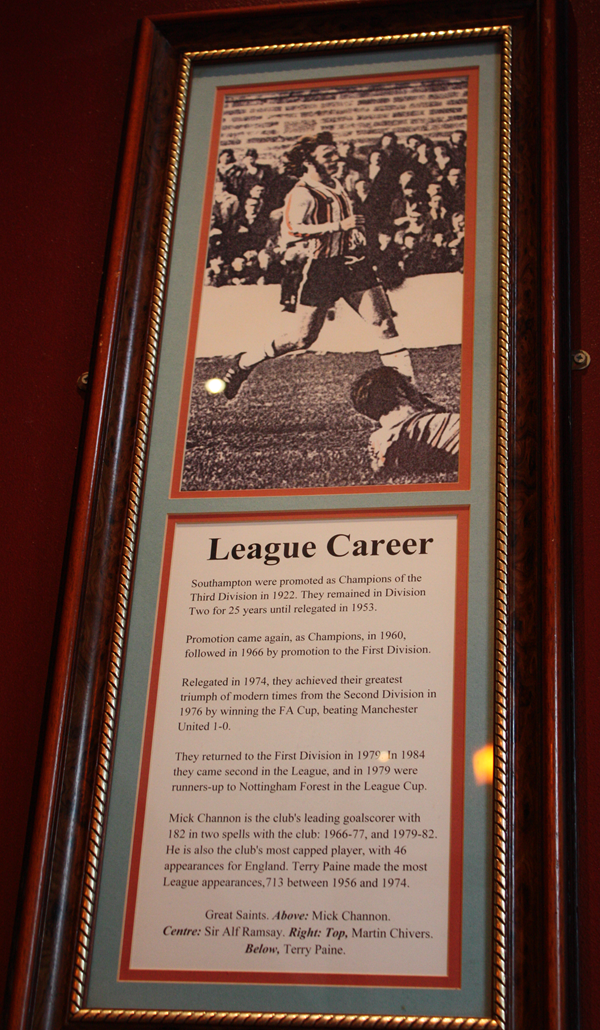
The text reads: Southampton were promoted as Champions of the Third Division in 1922. They remained in Division Two for 25 years until relegated in 1953.
Promotion came again, as Champions, in 1960, followed in 1966 by promotion to the First Division.
Relegated in 1974, they achieved their greatest triumph of modern times from the Second Division in 1976 by winning the FA Cup, beating Manchester United 1-0.
They returned to the First Division in 1979. In 1984 they came second in the League, and in 1979 were runners-up to Nottingham Forest in the League Cup.
Mick Channon is the club’s leading goal scorer with 182 in two spells with the club: 1966-77, and 1979-82. He is also the club’s main capped player, with 46 appearances for England. Terry Paine made the most League appearances, 713 between 1956 and 1974.
Framed text about Southampton F.C.
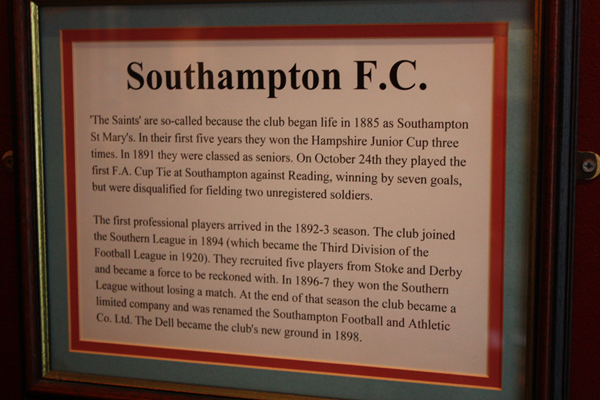
The text reads: ‘The Saints’ are so-called because the club began life in 1885 as Southampton St Mary’s. In their first five years they won the Hampshire Junior Cup three times. In 1891 they were classed as seniors. On October 24th they played the first F.A. Cup Tie at Southampton against Reading, winning by seven goals, but were disqualified for fielding two unregistered soldiers.
The first professional plays arrived in the 1892-3 season. The club joined the Southern League in 1894 (which became the Third Division of the Football League in 1920). They recruited five players from Stoke and Derby and became a force to be reckoned with. In 1896-7 they won the Southern League without losing a match. At the end of that season the club became a limited company and was renamed the Southampton Football and Athletic Co. Ltd. The Dell became the club’s new ground in 1898.
A framed poster for a cruise ship from Southampton to New York.
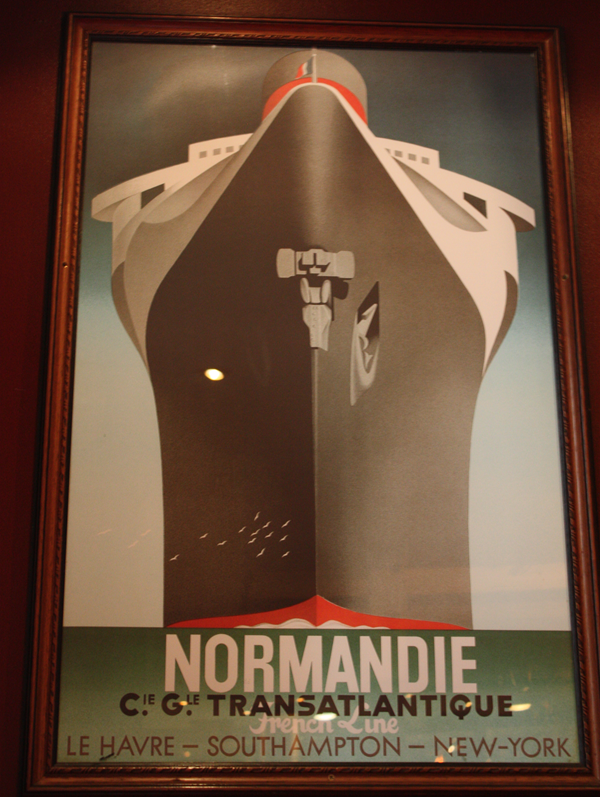
A framed poster for a cruise ship from Southampton to New York.
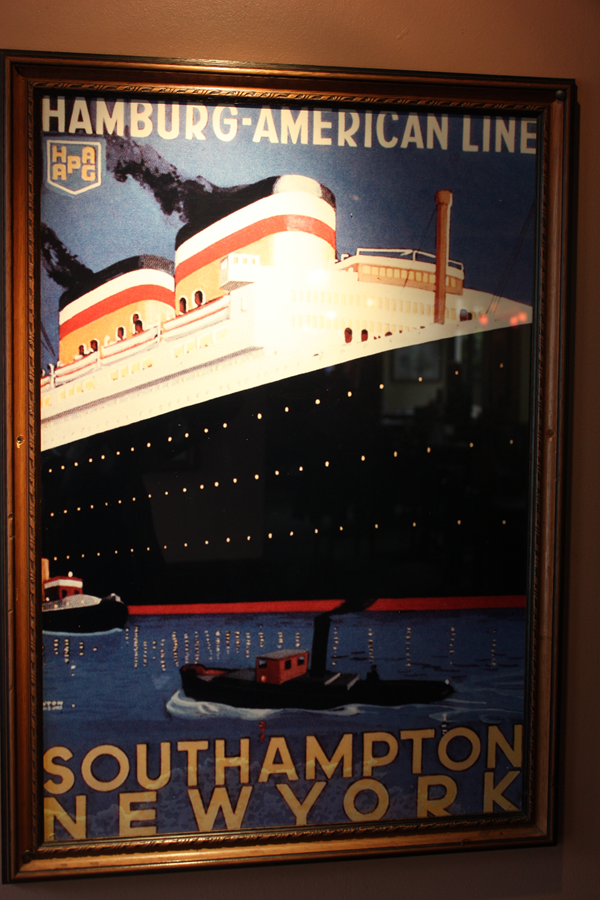
Framed posters for the Southampton Docks.
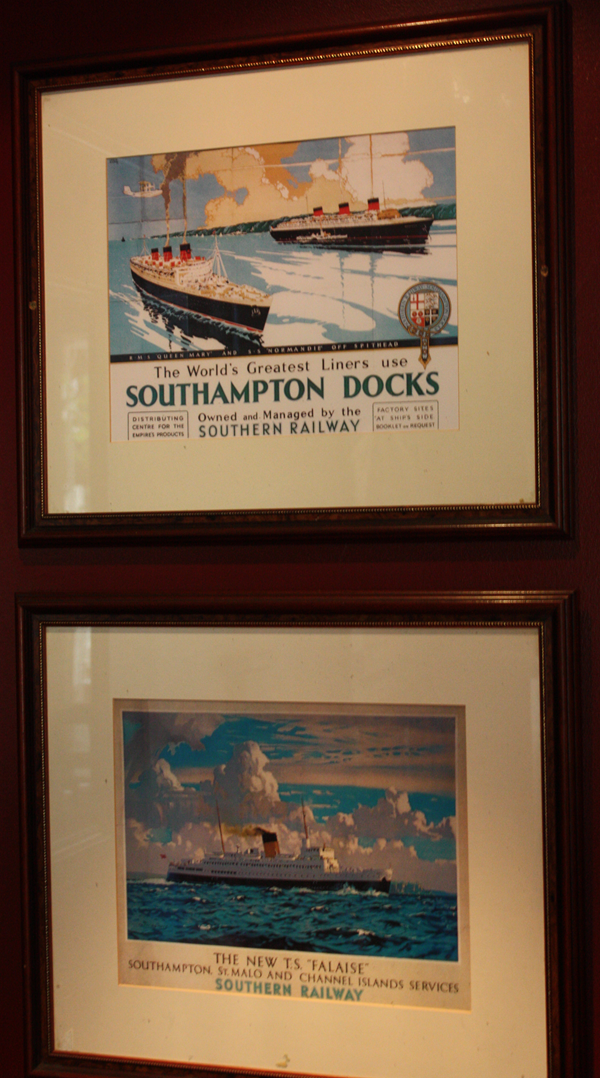
Framed photographs of Southampton West Station c.1906 and c.1905.
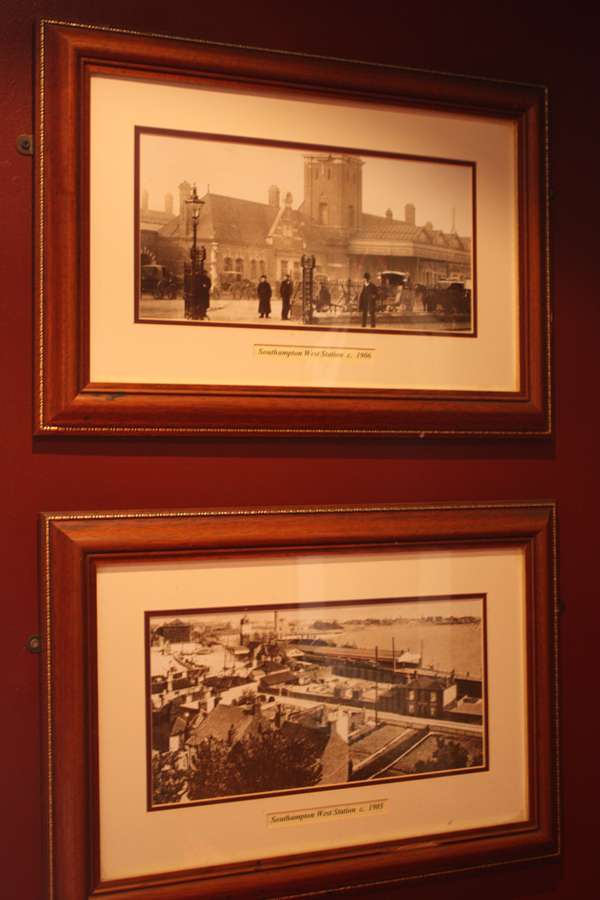
A framed photograph of the Empress Dock, Southampton c.1904.
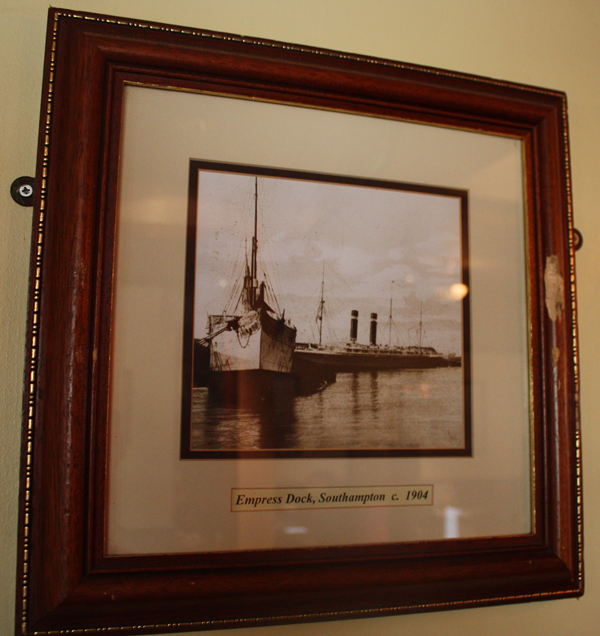
A framed photograph of the High Street, Southampton c.1907.
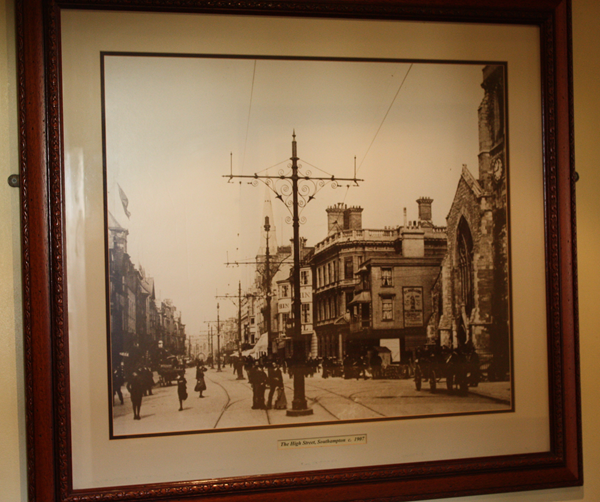
A watercolour painting of Southampton.
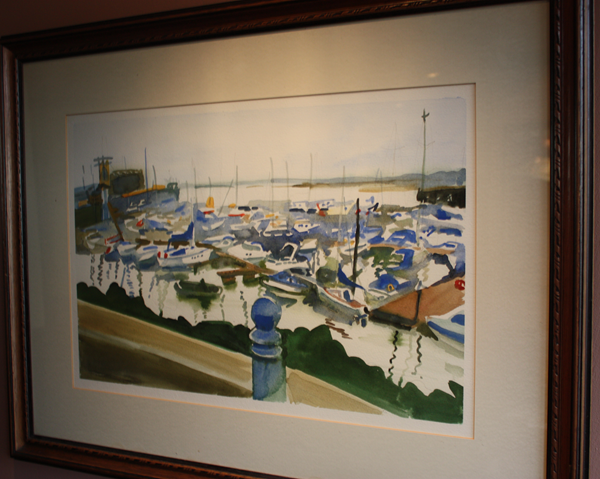
External photograph of the building – main entrance.
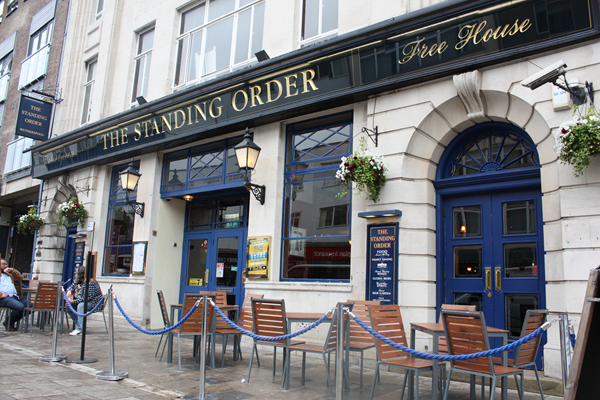
If you have information on the history of this pub, then we’d like you to share it with us. Please e-mail all information to: pubhistories@jdwetherspoon.co.uk